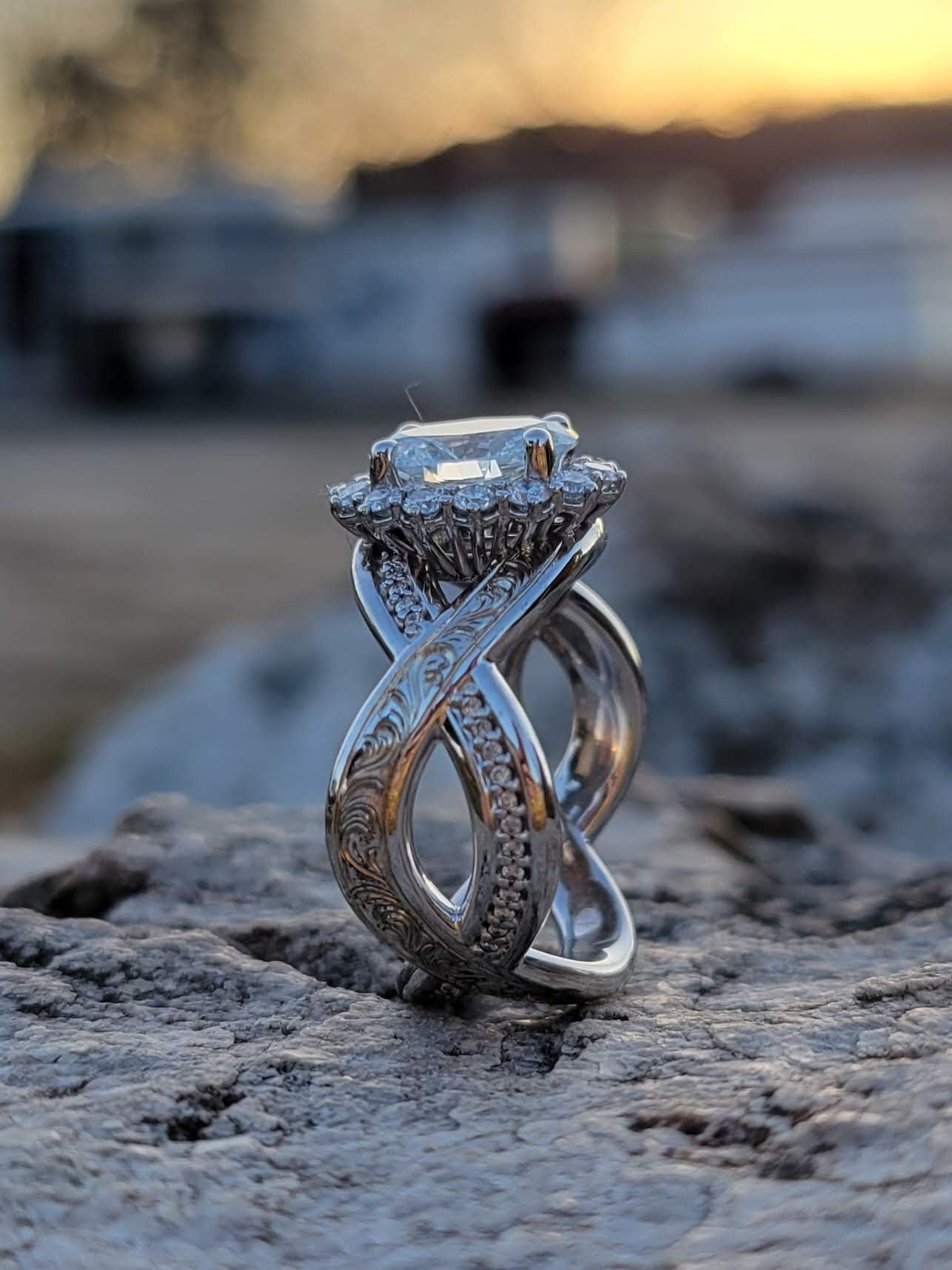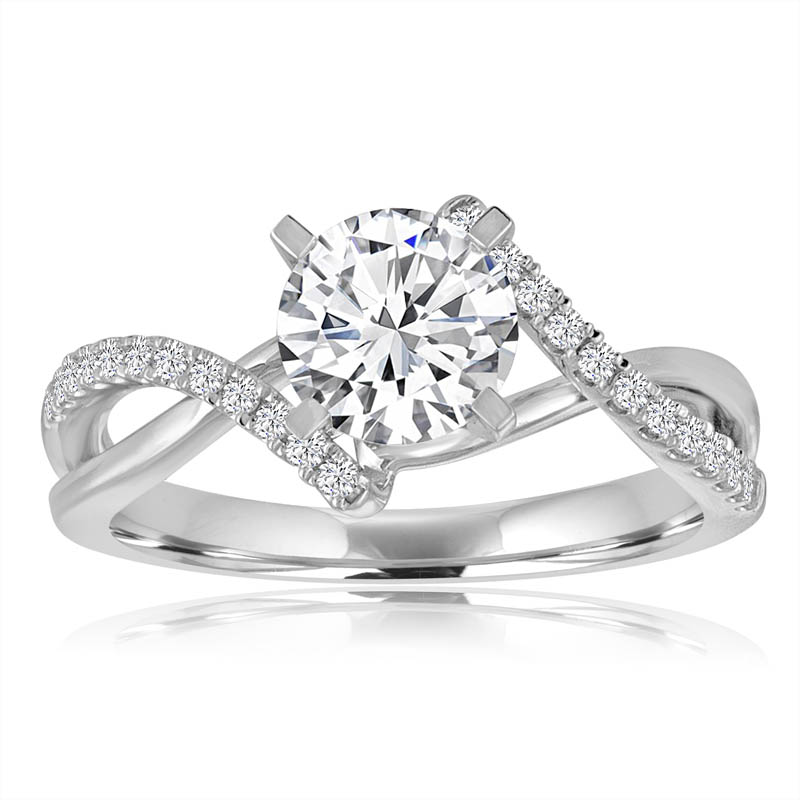How to Care for Your lab grown diamond engagement rings and Keep Them Sparkling for Life
Why Laboratory Grown Diamond Interaction Rings Are the Perfect Selection for Eco-Conscious Couples
Lab-grown Diamond involvement rings present a compelling choice for couples who prioritize sustainability. These rubies offer a striking choice to conventional extracted stones, considerably decreasing environmental harm. They are created using sophisticated methods that ensure both quality and brilliance. As awareness of moral sourcing expands, several pairs are reconsidering their choices. What effects does this change have for the future of the Diamond market?

The Environmental Influence of Typical Diamond Mining
Diamond mining has long been commemorated for its allure and prestige, the ecological consequences of traditional mining methods are increasingly worrying. The removal of rubies frequently involves substantial land interruption, leading to logging and environment loss for countless types. Additionally, the procedure eats huge quantities of water, which can deplete neighborhood resources and detrimentally affect bordering communities. Hazardous chemicals made use of in mining operations can pollute neighboring water sources, better endangering both human populaces and wild animals.
The carbon impact connected with transporting mined rubies includes to the total environmental toll. The heavy machinery and devices needed for mining procedures add significantly to greenhouse gas discharges. As recognition of these concerns expands, numerous consumers are starting to doubt the sustainability of standard Diamond sourcing. This shift in point of view highlights the immediate need for more ecologically pleasant choices, such as lab-grown rubies, which assure to reduce the ecological impact while preserving the charm and worth of Diamond precious jewelry.
The Refine of Developing Lab-Grown Diamonds
Lab-grown rubies are developed via 2 key approaches: High Stress Heat (HPHT) and Chemical Vapor Deposition (CVD) The HPHT procedure simulates the all-natural problems under which diamonds form in the Earth's mantle. It involves subjecting carbon to severe stress and temperature level, leading to the condensation of carbon atoms into Diamond structures. In contrast, the CVD method enables the growth of rubies in a regulated atmosphere. This technique utilizes a gas mixture including carbon, which is invigorated to create plasma, making it possible for carbon atoms to down payment onto a substrate and expand layer by layer into Diamond crystals.
Both methods create diamonds that are chemically and physically the same to all-natural diamonds - lab grown diamond engagement rings. The selection of method usually relies on the preferred qualities and size of the final gem. This cutting-edge technique to Diamond development not just supplies a lasting option yet likewise permits higher transparency in the sourcing of materials
Quality and Brilliance of Lab-Grown Diamonds
While many may presume that lab-grown rubies differ in high quality from their all-natural equivalents, they in fact show similar luster and aesthetic charm. Lab-grown rubies are produced utilizing sophisticated innovation that replicates the all-natural conditions under which rubies create, leading to stones that have similar physical and chemical buildings. These diamonds achieve the same exceptional clearness and shade grading as mined rubies, making them indistinguishable to the naked eye.
In terms of luster, lab-grown rubies frequently show premium light performance due to their precision-cut facets. The extensive top quality control during manufacturing guarantees that these diamonds satisfy high requirements, improving their aesthetic appeal. Additionally, they are offered in a selection of sizes and forms, allowing pairs to find the best ring to match their personal style. Inevitably, lab-grown diamonds supply a charming mix of elegance and top quality, making them an appealing option for involvement rings.
Moral Factors To Consider in the Diamond Market
As consumers become significantly familiar with the honest ramifications surrounding Diamond sourcing, the conversation around the Diamond sector has moved markedly. Issues about problem rubies, commonly described as "blood diamonds," have actually triggered phone calls for higher openness and responsibility in mining practices. These rubies are extracted in war areas and offered to finance armed problem, increasing severe ethical inquiries for consumers. In addition, the ecological impact of conventional Diamond mining has come under analysis, with issues such as environment damage and water air pollution often highlighted.
In response, many have actually turned to lab-grown rubies as a more moral option. These stones are produced in controlled settings, eliminating the threats associated with mining. Subsequently, lab-grown diamonds interest consumers looking for to make accountable options that align with their values. The expanding demand for moral methods proceeds to reshape the Diamond industry, promoting humane this article and lasting sourcing approaches.
Cost-Effectiveness of Lab-Grown Diamonds
Lab-grown diamonds supply a compelling alternative for consumers seeking cost-effective involvement rings - lab grown diamond engagement rings. Valued considerably reduced than their natural equivalents, they give outstanding worth for cash without compromising quality or appearance. This price makes lab-grown diamonds an eye-catching choice for budget-conscious pairs
Lower Price Point
Lots of couples are discovering that choosing lab-grown Diamond engagement rings can significantly lower their total expenses without sacrificing quality or appeal. These rubies usually cost 30% to 50% much less than their mined equivalents, making them an eye-catching alternative for budget-conscious consumers. The rate advantage occurs from lower production expenses and a much more effective supply chain, which gets rid of the costs related to mining. Because of this, couples can buy bigger rocks or even more detailed setups, boosting the total visual of their rings. This price not just enables a much more individualized selection yet likewise lines up with the values of eco-conscious couples that focus on sustainability while staying economically smart. Lab-grown diamonds provide a perfect mix of style and economic situation.
Worth for Cash
The cost-effectiveness of lab-grown diamonds extends beyond their initial cost, using remarkable value for cash. Unlike all-natural diamonds, lab-grown choices can be approximately 40% cheaper while preserving the exact same physical and chemical properties. This price permits couples to buy bigger or higher-quality rocks without surpassing their spending plans. The resale value of lab-grown diamonds is progressively boosting, making them a more practical option for future economic considerations. Furthermore, lab-grown diamonds frequently include lower ecological and honest costs, giving couples with peace of mind. By choosing lab-grown rubies, eco-conscious couples not only save money yet likewise add to sustainable techniques, enhancing their general value proposal in the precious jewelry market.

Personalization Options for Lab-Grown Engagement Rings
How can pairs assure their engagement ring reflects their distinct love tale? Modification choices for lab-grown Diamond interaction rings provide a suitable solution. Pairs can select from various Diamond shapes, including round, princess, or oval, enabling them to pick a design that reverberates with their individual visual.
Additionally, they can choose on the setup-- be it jewelry, halo, or vintage-inspired-- making certain the ring enhances the Diamond's brilliance. Metal choices, such as white gold, yellow gold, or increased gold, additionally enhance personalization, accommodating private preferences.
Pairs can integrate purposeful engravings, adding an emotional touch that represents their bond. With these comprehensive personalization options, lab-grown Diamond interaction rings not just personify a couple's love however additionally show their values, making them an ideal option for eco-conscious partnerships. Ultimately, these rings become a real representation of their distinct journey with each other.
Often Asked Concerns
How Do Lab-Grown Diamonds Contrast to All-natural Diamonds in Value?
Lab-grown diamonds generally cost 20-40% much less than natural diamonds, using similar useful link quality and look. Their lower price factor makes them an attractive option, particularly for budget-conscious customers seeking sustainable and honest options in precious jewelry.

Are Lab-Grown Diamonds Much More Resilient Than All-natural Diamonds?
Lab-grown diamonds possess the very same physical and chemical residential properties as natural diamonds, consisting of toughness. Both types rack up a perfect 10 on the Mohs range, making sure that lab-grown diamonds are similarly resistant to scraping and damages.
Can Lab-Grown Diamonds Be Resold Quickly?
Lab-grown rubies can be resold, however their market demand varies compared to natural diamonds. While some purchasers value their ethical origins, others might favor natural choices, possibly affecting resale value and simplicity of deal.
What Are the Treatment Recommendations for Lab-Grown Diamonds?
Lab-grown rubies require regular care to maintain their sparkle. Cleansing with light soap and warm water, utilizing a soft brush, and preventing extreme chemicals will certainly aid preserve their sparkle and stability for several years ahead.
Are There Any Accreditations for Lab-Grown Diamonds?
Lab-grown rubies can be licensed by reputable organizations such as the Gemological Institute of America (GIA) and the International Gemological Institute (IGI) These certifications assure credibility, adherence, and top quality to sector requirements for lab-created gems.
Both approaches generate rubies that are find more chemically and physically similar to natural diamonds. Lab-grown diamonds are produced utilizing sophisticated innovation that replicates the natural problems under which rubies develop, resulting in stones that have the same physical and chemical residential properties. Lab-grown diamonds usually cost 20-40% less than all-natural diamonds, using comparable top quality and look. Lab-grown rubies possess the same physical and chemical residential or commercial properties as natural rubies, including resilience. Lab-grown diamonds can be marketed, but their market need differs compared to all-natural diamonds.